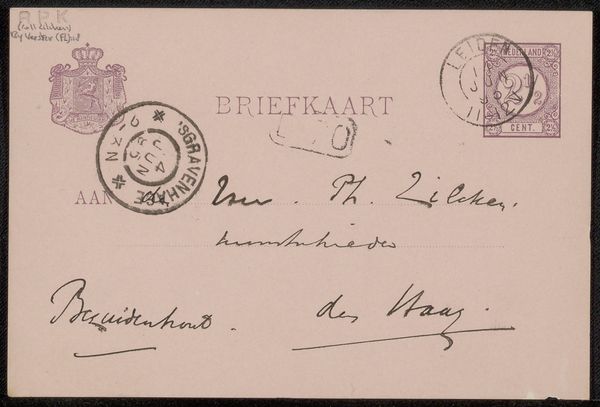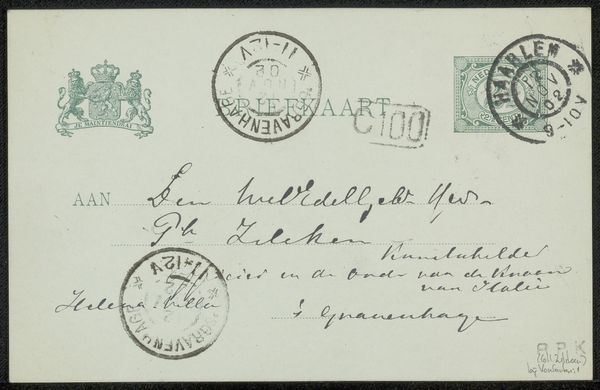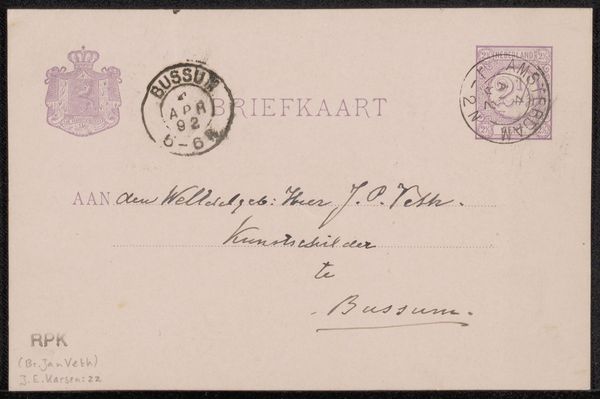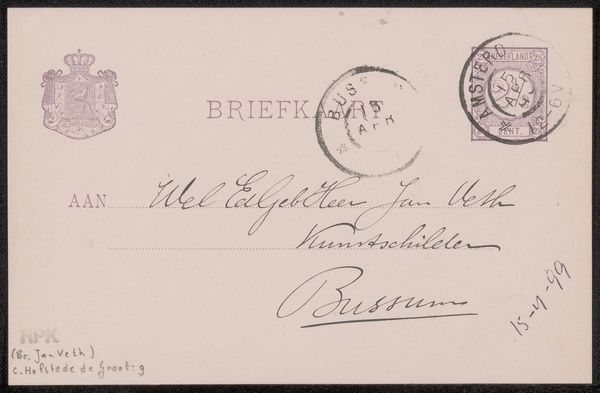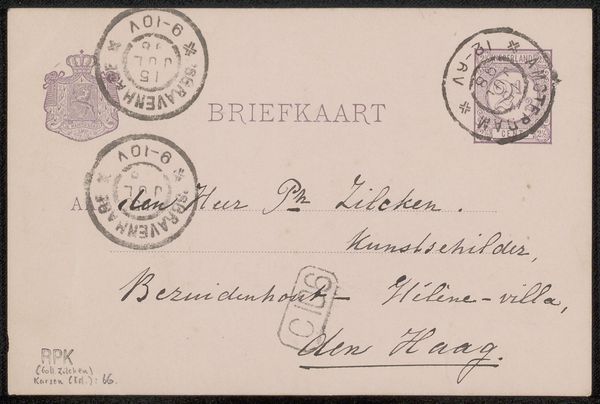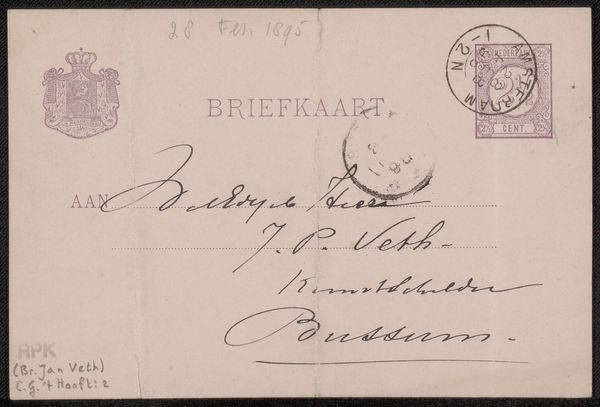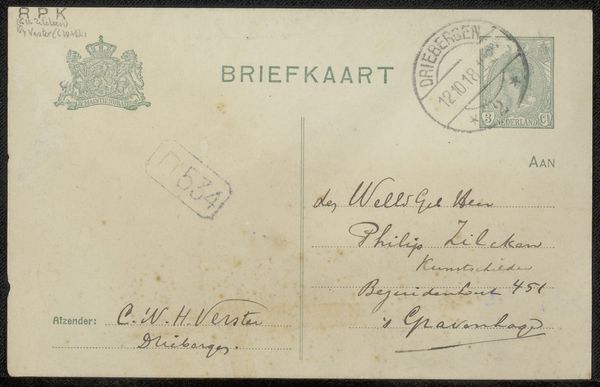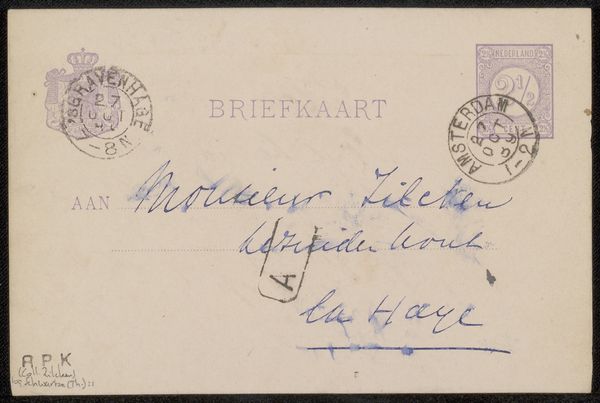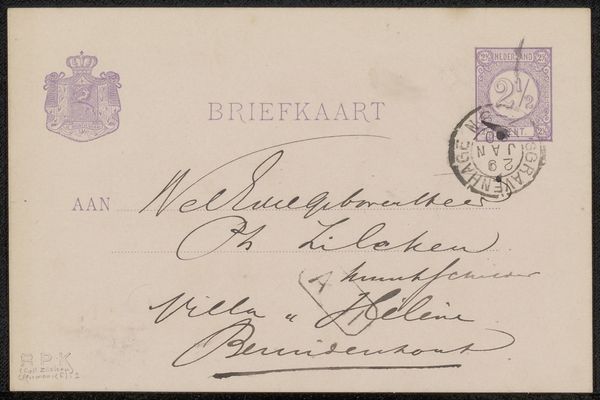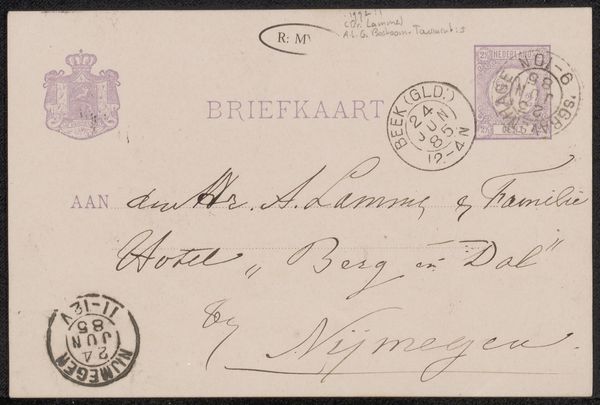
drawing, paper, ink, pen
#
drawing
#
comic strip sketch
#
pen sketch
#
hand drawn type
#
paper
#
personal sketchbook
#
ink
#
ink drawing experimentation
#
pen-ink sketch
#
pen work
#
sketchbook drawing
#
pen
#
storyboard and sketchbook work
#
post-impressionism
#
sketchbook art
Copyright: Rijks Museum: Open Domain
Curator: Here we have "Briefkaart aan Jan Veth," a postcard to Jan Veth, likely created around 1888 by Willem Witsen. It's currently held at the Rijksmuseum. Editor: Immediately, it strikes me as an intimate, almost ephemeral object. The handwriting and faded ink give it a very personal feel. You can almost feel the artist's hand as he was creating it. Curator: Indeed. It's a fascinating artifact. As a physical object circulating within the late 19th-century art world, it points to networks of artists and their relationships. Witsen and Veth were both significant figures, and this card represents their connection within a broader cultural and social context. Editor: Exactly! The materiality of this small paper object reveals so much about the practical aspects of artistic exchange. Think about the accessibility of postcards and the relative ease of creating and sending one. How this simple technology facilitated the movement of ideas. Curator: Also consider how the postal system played a vital, often overlooked role, in connecting artists and institutions during a period without rapid global communication. The postal marks themselves speak to the bureaucracy necessary for art and artists to thrive. Editor: And the handwritten script underscores that human element—the labor and skill required to inscribe text legibly. The materiality speaks to both the formal education and social practice of communication in the late 19th century. The actual inscription embodies cultural skills and values, like being educated. Curator: It’s interesting to think of postcards like this as pieces of performance. Public statements about one's position in artistic networks. These messages played an essential role in building Witsen’s artistic reputation. Editor: Thinking about process is also useful to assess value. As it survives until our era, there's not only an original creative energy invested here but also the long, perhaps even precarious work of archival labor: storing and displaying Witsen's original ink work so viewers like us today can consider its lasting impact. Curator: It reminds us that art historical importance emerges not only from aesthetic criteria, but from a weaving together of social, institutional, and material strands that persist over time. Editor: Absolutely. Looking closely at something so apparently minor as this postcard reminds me to consider artistic endeavors beyond grand paintings and sculpture, thinking through all kinds of processes related to communication and artistic skill.
Comments
No comments
Be the first to comment and join the conversation on the ultimate creative platform.
